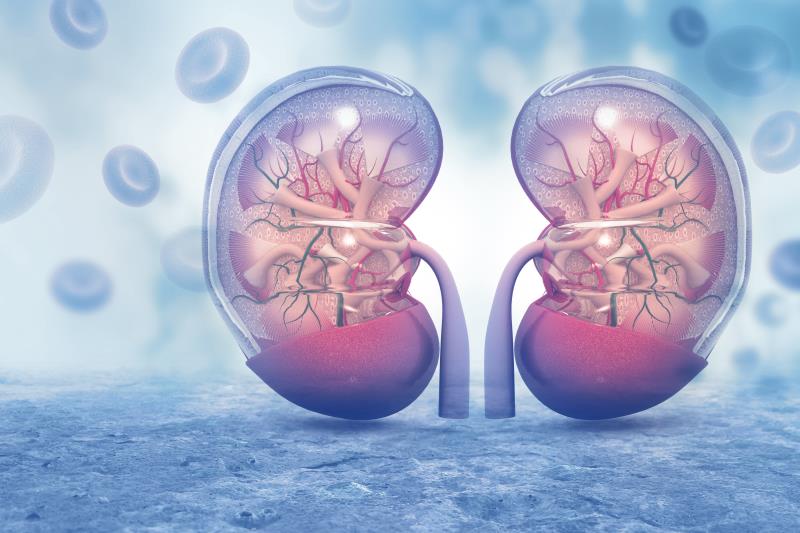
Adding belimumab to standard maintenance therapy significantly improves renal response in patients with active lupus nephritis compared with standard therapy alone, according to the BLISS-LN study presented at the ERA-EDTA 2020 Meeting.
“Lupus nephritis is a serious complication of systemic lupus erythematosus [SLE]. Despite aggressive treatment, renal response rates remain low, and 10–30 percent of patients progress to end-stage renal disease [ESRD],” explained lead investigator Dr Brad Rovin from Ohio State University in Columbus, Ohio, US.
Therefore, keeping the disease under control remains an unmet need. Reducing relapses of lupus flare in patients on standard immunosuppressive treatment can help prevent progression to ESRD and the need for dialysis.
After 2 years of treatment, the addition of belimumab led to a significant improvement in primary renal response compared with standard therapy alone (43.0 percent vs 32.3 percent; odds ratio [OR], 1.55; p=0.0311). The primary renal response is defined as a composite of urine protein creatinine ratio (uPCR) ≤0.7, estimated glomerular filtration rate (eGFR) ≤20 percent below preflare value or ≥60 mL/min/1.73 m2, and no rescue therapy. [ERA-EDTA 2020, abstract LB001]
Complete renal response was also greater with the addition of belimumab vs standard therapy alone at 2 years (30 percent vs 19.7 percent; OR, 1.74; p=0.0167). Complete renal response refers to uPCR <0.5, eGFR ≤10 percent below preflare value or ≥90 mL/min/1.73 m2, and no treatment failure.
In addition, patients treated with belimumab were half as likely to experience first renal-related event or death during the 2 years of treatment compared with those on standard therapy alone (15.7 percent vs 28.3 percent; hazard ratio [HR], 0.51; p=0.0014).
“More patients treated with belimumab plus standard therapy achieved and maintained a complete renal response and reached the primary efficacy response end point compared with placebo plus standard therapy,” Rovin concluded.
Does background standard therapy matter?
In the double-blind phase III trial, 448 adult patients (mean age 33 years, 88 percent female) with active lupus nephritis were randomized 1:1 to receive intravenous belimumab 10 mg/kg or a matching placebo, in addition to investigator-adjudicated standard therapy for 104 weeks.
Standard therapy used was either cyclophosphamide-based induction therapy followed by azathioprine maintenance (n=118) or mycophenolate mofetil (MMF) induction followed by MMF maintenance (n=328), both given with high-dose corticosteroids during induction.
“Improvement in renal outcome was achieved on a background of sustained reduction in corticosteroid use,” reported Rovin, as corticosteroid dose had to be ≤10 mg a day at the 24 week milestone.
Stratifying the analysis by standard therapy used showed that patients on cyclophosphamide induction therapy benefited less from belimumab than those who received MMF for induction.
When asked about which standard therapy is preferred in light of the results, Rovin said the trial was not powered to assess a difference between the two immunosuppressive regimens.
“MMF is already used in many patients. It has been shown to be equivalent to cyclophosphamide in the induction therapy of lupus nephritis and superior to azathioprine in the maintenance phase. Adding belimumab can further improve the treatment results,” said Rovin.
Belimumab is a recombinant human monoclonal antibody that blocks the activity of the soluble human B lymphocyte stimulator protein (BLyS) — which promotes the growth of B lymphocytes and was found to be overexpressed in patients with SLE.
It is currently approved for the treatment of active SLE in patients who are receiving other lupus medicines.